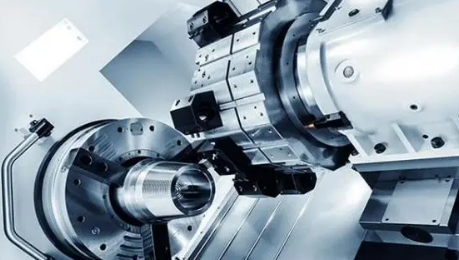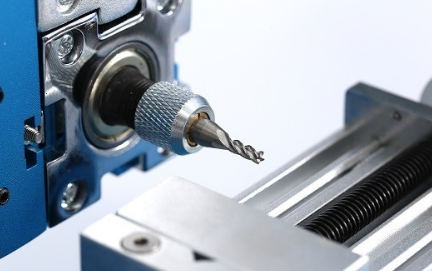The position of CNC lathes in the manufacturing industry is becoming increasingly important, and lathe tools, as important components that can affect the quality of workpieces in turning, need to adapt to the characteristics of high efficiency, high speed, and high degree of automation. This article will introduce the types of CNC lathe tools and how to choose the appropriate tools from two aspects.
The widespread application of CNC lathes in production practice, the formation of quantitative production lines, and CNC programming have become one of the key issues in CNC machining.
In the process of programming CNC programs, it is necessary to select cutting tools and determine cutting parameters in real-time under human-machine interaction. Therefore, programmers must be familiar with the selection methods of cutting tools and the principles of determining cutting quantities, in order to ensure the machining quality and efficiency of parts, fully leverage the advantages of CNC lathes, and improve the economic benefits and production level of enterprises.

Types of CNC lathe cutting tools
The requirements of CNC lathes for tool stability, durability, and easy replacement are becoming increasingly high. In recent years, CNC machine clamp type indexable tools have been widely used in mechanical processing, accounting for a large proportion in terms of quantity.
What are the types of cutting tools for CNC lathes
According to the structure of the cutting tool, it can be divided into three types: integral, inlaid, and special. According to the different materials used to manufacture cutting tools, they can be divided into four categories: diamond cutting tools, high-speed steel cutting tools, hard alloy cutting tools, and other material cutting tools (such as ceramic cutting tools). Classified by the number of blades: single edged tools, multi edged tools. A single edged tool refers to a tool with only one main cutting edge, while a multi edged tool refers to a tool with two or more main cutting edges
Compared with the tools used on ordinary lathes, CNC cutting tools have many different requirements, mainly including high accuracy, good interchangeability, long service life, good rigidity (especially for rough machining tools), easy to change tools quickly, stable cutting performance, low vibration and thermal deformation, easy adjustment of tool size to reduce tool change adjustment time, and reliable tool breaking of chips or iron chips. Beneficial for chip removal: serialization and standardization to facilitate programming and tool management.

Selection of cutting tools for CNC lathes
The selection of cutting tools is carried out in the human-machine interaction state during the CNC machining process. Programmers can correctly select cutting tools and tool holders based on factors such as the machining ability, machining process, performance of workpiece materials, and cutting amount of the lathe. The overall principle of tool selection is: good rigidity, durability, and high precision, easy installation and adjustment. On the premise of meeting processing requirements, try to choose shorter tool holders to improve the rigidity of tool processing.
In the machining process of economical CNC lathes, manual grinding, measurement, and replacement of cutting tools take up a longer auxiliary time. Therefore, it is necessary to arrange the order of cutting tools reasonably to reduce auxiliary machining time. The following principles should usually be followed: minimize the number of cutting tools: after clamping a cutting tool, all machining steps that it can perform should be completed: rough and fine machining tools should be used separately, even for tools with the same size specifications, surface finishing should be carried out first, and then the surface finishing of the workpiece should be carried out.
When selecting a tool, it is important to ensure that the size of the tool matches the surface size of the workpiece being processed. When machining free-form surfaces, due to the zero cutting speed of the end of the ball head tool, in order to ensure machining accuracy, the turning line spacing is generally adopted as the top dense distance, so the ball head is often used for precision machining of surfaces. However, flat end cutting tools are superior to ball end cutting tools in terms of surface processing quality and cutting efficiency. Therefore, as long as it is ensured that there is no cutting, whether it is rough machining or precision machining of curved surfaces, flat end cutting tools should be given priority. In addition, the durability and accuracy of cutting tools are closely related to tool prices. It should be noted that in most cases, although choosing a good tool increases tool costs, improving machining quality and efficiency reduces the overall machining cost.
Through the introduction of CNC lathe tools in this article, we not only understand that the types of CNC lathe tools can be classified based on tool structure, manufacturing tool materials, and the number of cutting edges, but also understand that tool selection is carried out in the human-machine interaction state during CNC machining. As the executor of CNC lathe machining, tools play a particularly important role.The image is from the internet. If there is any infringement, please contact us to delete it





